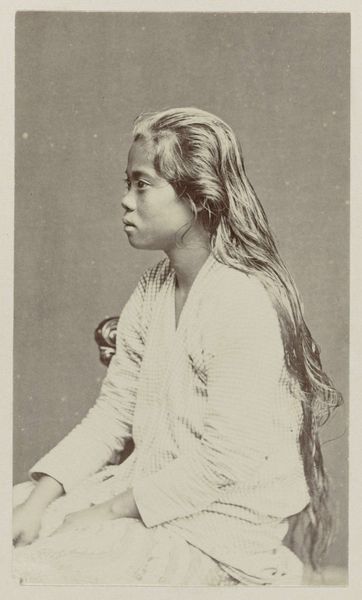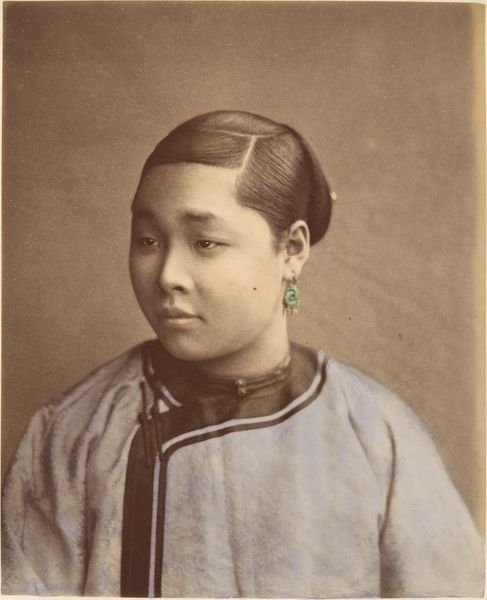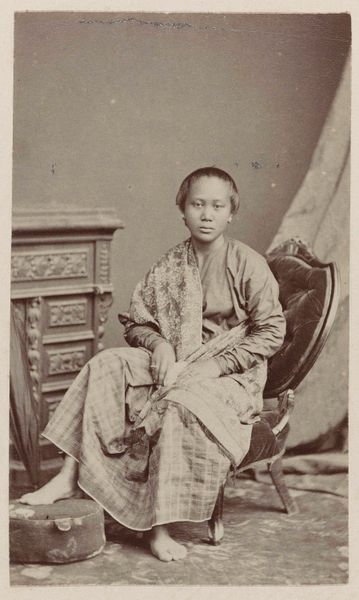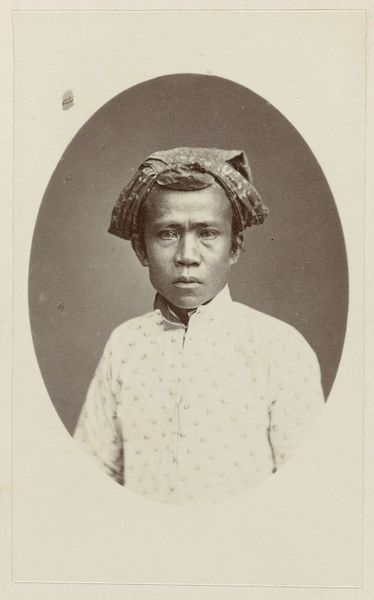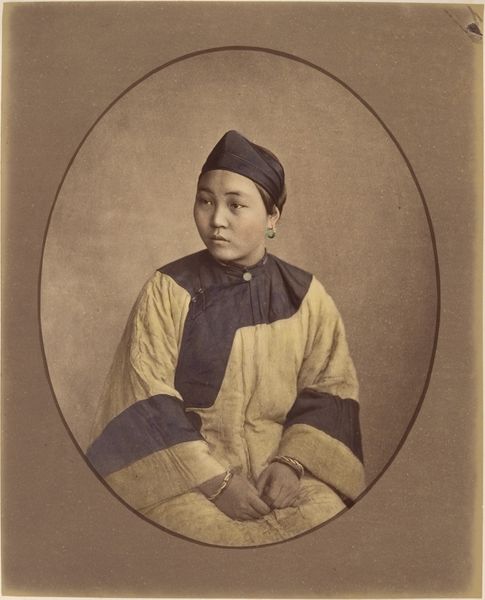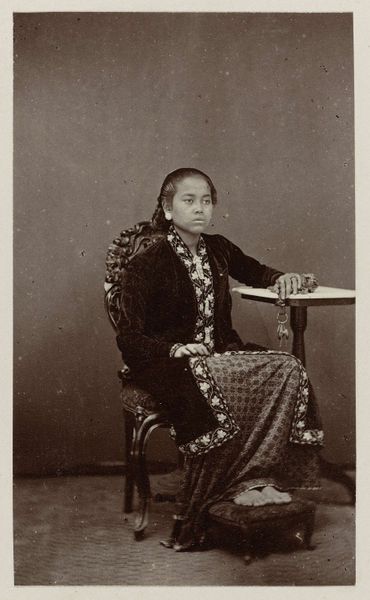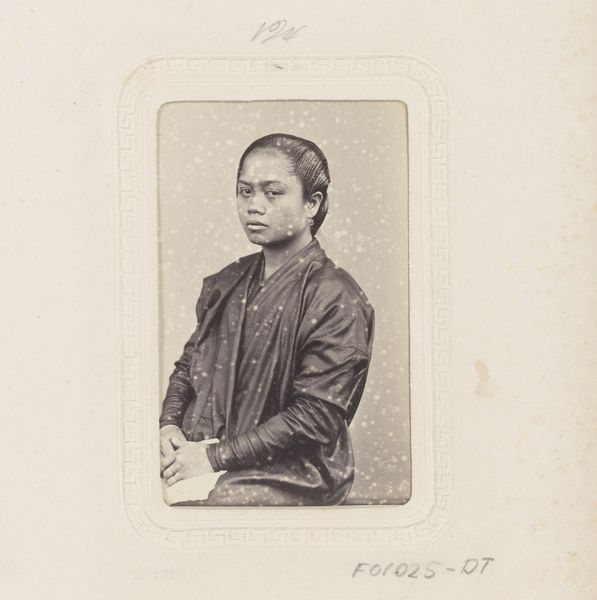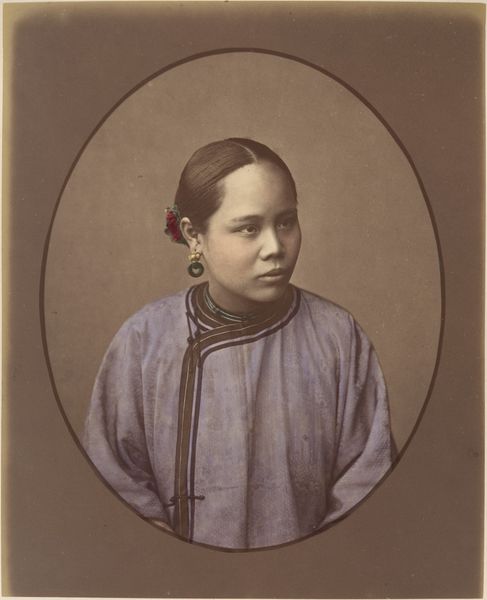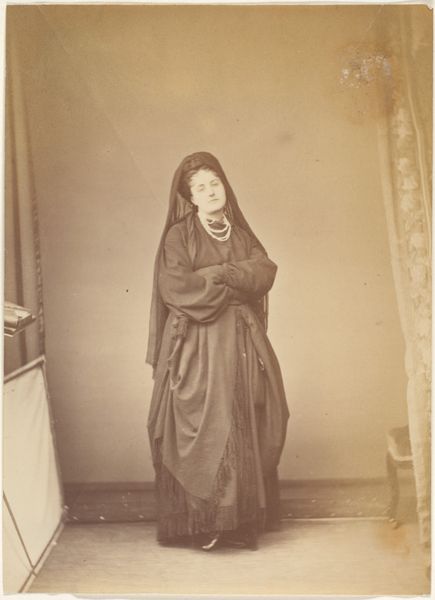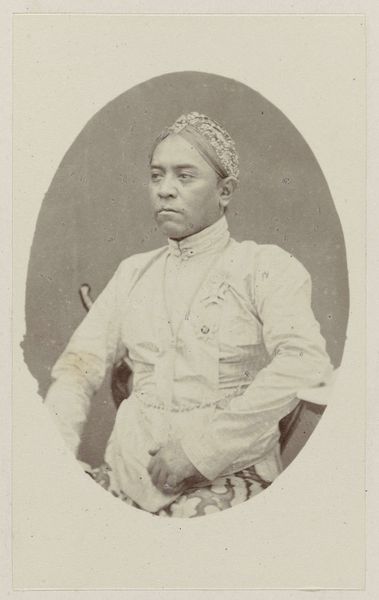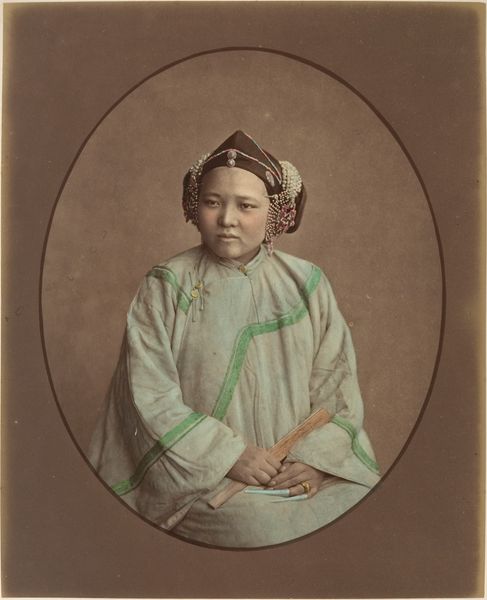
photography, gelatin-silver-print
#
portrait
#
portrait image
#
photography
#
gelatin-silver-print
#
realism
Dimensions: height 95 mm, width 55 mm
Copyright: Rijks Museum: Open Domain
Curator: This photograph, titled "Portret van een Meisje," which translates to "Portrait of a Girl," was taken around 1880. It is a gelatin-silver print by Woodbury & Page, currently held at the Rijksmuseum. Editor: My immediate thought is how powerfully present this young woman seems. The starkness of the print emphasizes the texture of her hair and the simple cloth of her blouse. You can almost feel the weight and humidity. Curator: Precisely! This studio, Woodbury & Page, operated primarily in Indonesia. Works such as this offer a window into the visual representation of people under colonial rule. It is far more than an innocent portrait. Editor: Right. This piece embodies both documentation and representation, but let’s not ignore the labor inherent in producing these gelatin-silver prints. The technical process itself becomes part of the social context. There’s an alchemy in turning raw materials into this finished object. The chemistry, the timing, it is a true craft. Curator: Absolutely. And consider how such portraits were often circulated—who consumed them, and what purposes did they serve? Understanding these power dynamics is crucial. Who had access to this image, and what narratives did it reinforce? Editor: Good point. This photograph raises questions about exoticism and commodity. We need to also examine how the production of these prints played into a colonial economy of extraction. What materials were sourced, and whose labor was involved, and at what cost? Curator: The gaze is what intrigues me. It challenges simplistic interpretations of Orientalism. There is something dignified and knowing in it. What’s so interesting is the resistance to complete objectification through photography. The portrait transcends simply reducing her to an anthropological curiosity or ethnographic data. Editor: Agreed, although, while some people would admire its artistry, the materials, their extraction, the process of developing and printing—these elements are rarely acknowledged in terms of how much exploitation factored into the artistic end result, like this portrait. Curator: It is such images that reveal layers of social, cultural, and historical context. I mean, think of the ways it challenges traditional museum practices. Editor: Right, from a materials perspective, we should try to keep our gaze on the whole complex assemblage: not just the image, but everything involved.
Comments
No comments
Be the first to comment and join the conversation on the ultimate creative platform.
